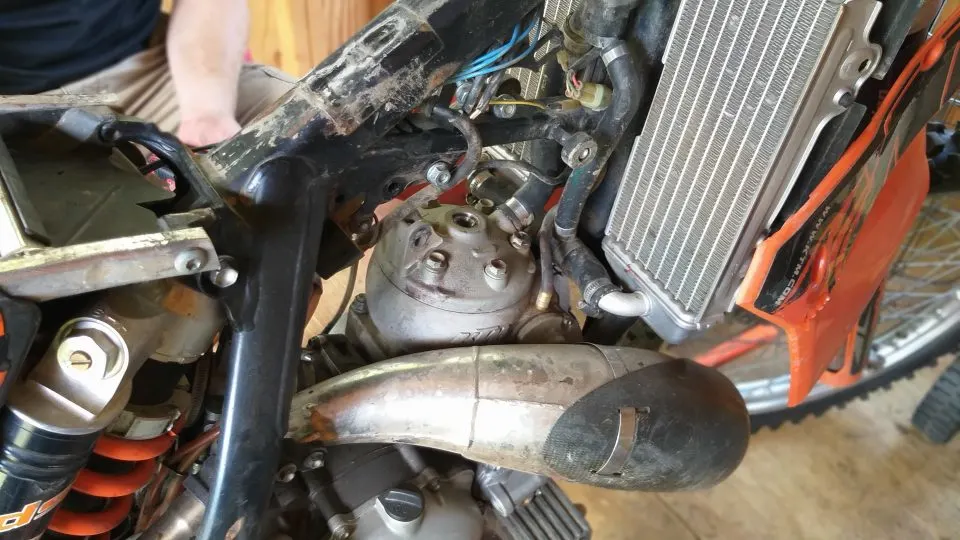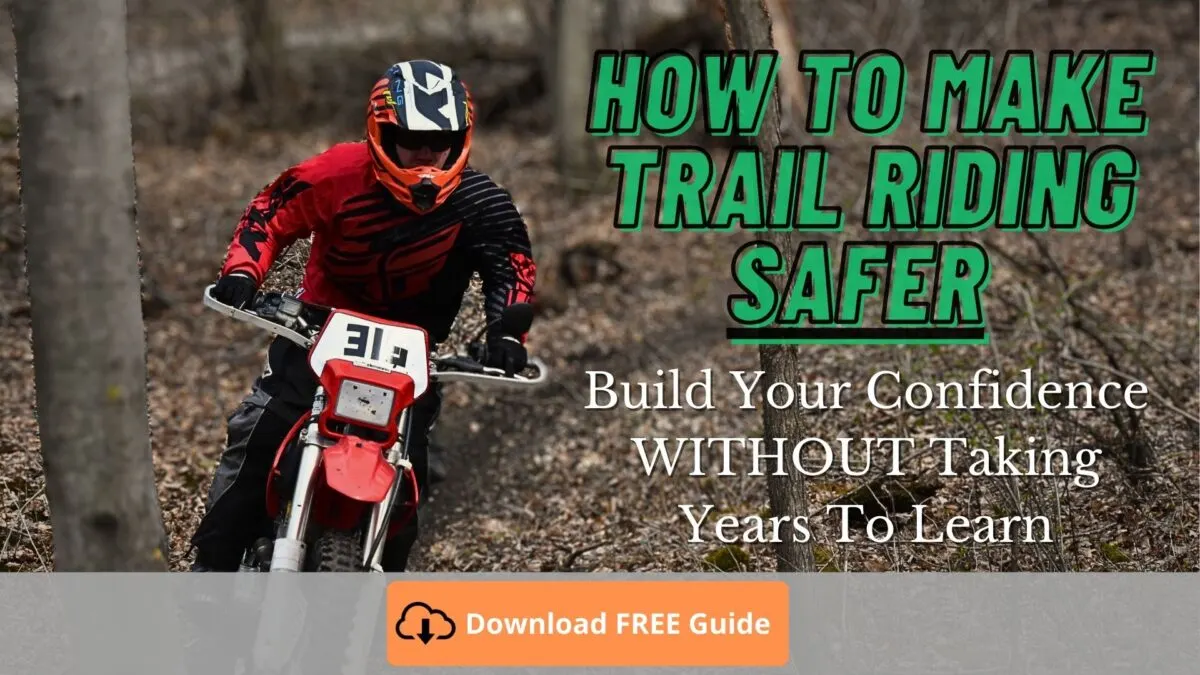Did you just rebuild or plan to rebuild your 2 stroke dirt bike top-end? The first 30 minutes are the most important if you want the engine to perform well and last as long as possible.
In this article I’ll show you my standard 2 stroke engine break in procedure. From proper break in oil ratio to tuning it for better power and reliability, this will work on Yamaha, Honda, KTM, or any 2 stroke dirt bike.
Disclaimer: these are the steps that I personally take on my own dirt bikes. With that said, I’m not responsible for any damage or accident that could happen from your own actions.
Rebuilding the top-end
Before you even break in the engine, you should know that there’s some things to keep in mind when installing a new top-end.

Remember to use some 2 stroke oil on the piston wrist pin to prevent damage when you first start it up.
Make sure to properly torque all the cylinder and engine studs and nuts. Use the star pattern to prevent warpage when tightening them down.
Also, replace any o-rings or washers that are damaged or leaking.
Using the right oil mix ratio
It’s possible to have too much engine in or running through the engine when you first start it up after a rebuild – you don’t want a smog signal coming from your garage.
With that said, using slightly more oil in the gas-oil mix ratio will help lubricate the fresh piston, rings and cylinder. This will aid in sealing to boost the compression while the engine is “breaking in” or “seating”.
Is your jetting right?
Jetting is super important at all times. Jetting that is too rich will foul plugs and not allow the rings to seat properly. This will result in less power because of lower compression.
But, if the jetting is too lean, then it will likely bog. A lean mixture will also get too hot and eventually start melting the top-end parts.
A fresh plug
Starting with a fresh plug is cheap and easy, but it’s easy to forget. Using an older spark plug, even if it was working before, just has a higher chance of the engine not running as well as it should when you first start it up.
First start up
The first 10-15 minutes of running your engine are the most important. This is where you can gain or lose the most potential power.
Do not start your 2 stroke dirt bike after a rebuild unless you’re actually ready to run in the engine.
Why do I say this as a precaution? Because I’ve seen quite a few people over the years just start it up and let it idle or rev it up in neutral and then shut it off.
There is no “load” on the engine if you’re revving it in neutral. A load on the engine is needed to properly seal the piston rings.
Warming it up
As covered in my other article, warming up your dirt bike engine is essential if you want it to last a long time. This is especially important for properly breaking it in.
Warming it up too quickly greatly increases the chance of it damaging the piston and cylinder.
Start it up and let it idle for at least 1 minute, with an occasional blip of the throttle so that it doesn’t “load up” with oil and potentially risk fouling a plug.
After 1-2 minutes you can start Riding it at low rpm and throttle openings. I typically ride it like that for at least a few minutes until the engine is nice and hot.
How hard and how soon?
So, now we’re on to the million dollar question, apparently. Do you break it in slow or fast?
I have done a lot of research over the years, and this is the way that I always do it now when I rebuild a top-end.
Once the engine is properly warmed up, I start accelerating and decelerating through the gears faster. Within 15 minutes I’m wide open as long as the engine is running well and has good throttle response.
If there’s bogging or sputtering, then the jetting needs some tuning.
Warning:
If you’re accelerating WOT through all the gears, do not decelerate without either pulling in the clutch or blipping the throttle as you slow down.
Why? If the engine stays at a high RPM (when you let off the throttle in 5th or 6th gear) and the throttle stays closed, then it could run out of enough oil to keep the cylinder wall properly lubed. This will cause more friction and heat, and could seize the engine if you do it long enough.
Putting a heavier amount of loads on the engine as you ride it longer will continue to deal the piston rings with the cylinder wall, giving you the most compression.
That means riding in sand or up a hill will make that easier because the engine has to work harder.
Also, use engine braking (what little engine braking a 2 stroke has) will help seal the other side of the piston ring. This means downshifting as you decelerate. Just remember to blip the throttle as you do it to keep the fuel mixture getting to the cylinder.
I keep doing this, along with some regular trail riding for at least 15-20 minutes.
After that, then I usually drain the oil just to make sure there’s no contamination or metal getting into the transmission (since it’s separate from the engine in a 2 stroke).
Getting the most power and reliability
Now that your 2 stroke top end is broken in and ready to ride, it’s time to dial in the jetting if you haven’t done that before.
Jetting is important for:
- Easy starting (when cold or hot)
- Smooth/best throttle response
- Fuel mileage (riding longer before refilling)
- Getting rid of bogging
- Preventing spark plugs fouling
- Getting the most power
- Making it your 2 stroke dirt bike easier to ride longer and faster
How to use your new found power
A fresh top-end means you’ll have more power, but can you actually use it all? In order to go fast safely, you must slow down and learn basic riding techniques, and I want to help you get started.
Click or tap here for a practical guide on proper riding technique.


